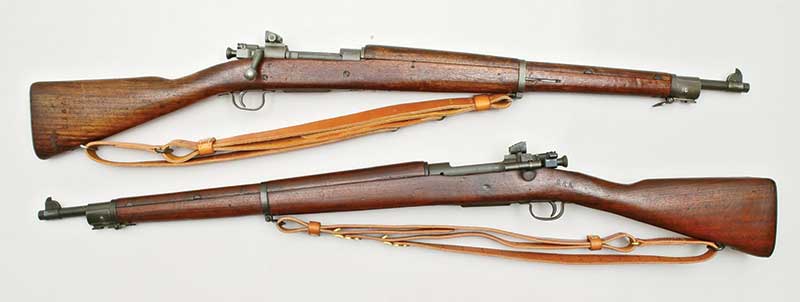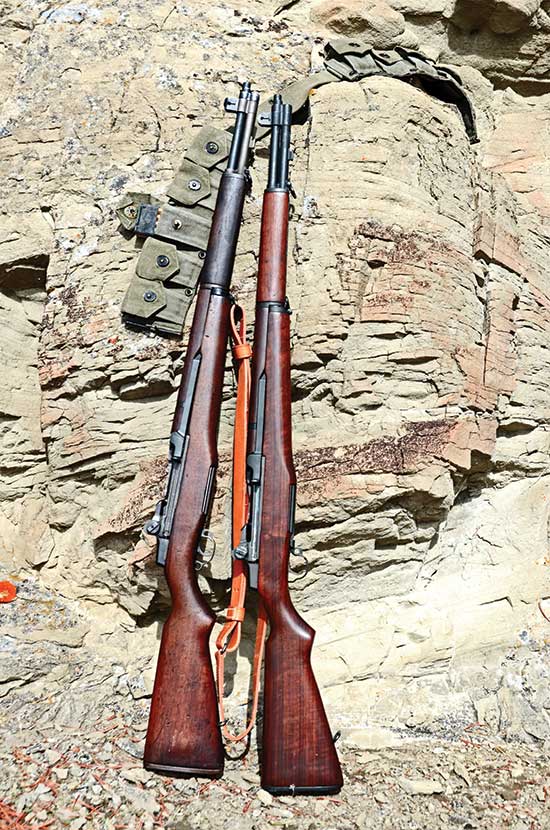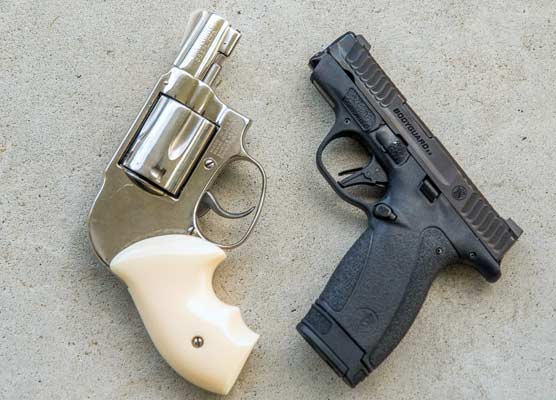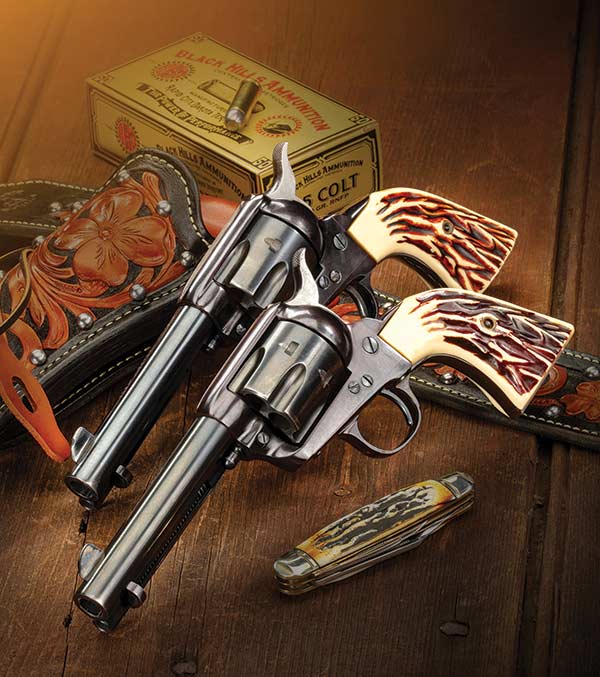American Arsenal
During World War II, the US served
as a small arms depot for the Allies
In the months leading up to America’s involvement in World War II, President Franklin D. Roosevelt referred to this country as the “arsenal of democracy.” What he meant was our mighty manufacturing base would be put to use making weapons for those countries then at war with Nazi Germany.
What the United States produced during WWII was truly phenomenal. Airplanes, tanks, jeeps, trucks and ships were all made in staggering quantities likely never again equaled. But—this being GUNS—let’s focus on what this meant in terms of firearms.
A Shift in Priorities
Early on after Japan’s attack on Pearl Harbor brought the United States into the conflict, certain things were declared “unessential” for the war effort. Manufacturers involved in making typewriters were set to making firearms. So were sewing machine factories and one storied maker of jukeboxes.
Singer Sewing Machine Corporation, for example, was given a contract for making Model 1911A1 .45 pistols. They did so. But only to the tune of 500. Our Ordnance Department considered them so finely made they instructed Singer to stop making pistols and gave them more intricate items to produce such as parts for bombsights. Today Singer Sewing Machines are made in China.
Two typewriter companies were set to making firearms. Remington Rand also produced 1911A1 pistols to the tune of almost 1 million—more than any other company during the war, including Colt itself, the pistol’s originator. The other typewriter manufacturer, Smith-Corona, was put to work making Model 1903A3 .30-caliber rifles. Since neither typewriter company was capable of producing barrels, those particular items were purchased separately from High Standard.
Today, of course, no typewriters are being manufactured at all and the original High Standard Company ceased as a viable firearms manufacturer in 1984. (A newly formed company with the High Standard name is located in Houston.)
Legendary Brand Names
Winchester Repeating Arms is one of the most recognized names in firearms and has been for well over a century. Naturally, the company was at the forefront of our “arsenal of democracy.” In fact, one near miracle in regards to WWII firearms was Winchester designed and fielded a prototype accepted as the M1 .30 Carbine.
The miracle part wasn’t so much Winchester designed a good firearm. They’d been doing so since 1866. The miracle was that from start to finish they designed and had a firing sample in a mere 90 days.
As with Colt and 1911A1, it might seem ironic Winchester wasn’t the top manufacturer of .30 M1 Carbines during the war years. Inland—a division of General Motors—produced over 2.6 million, whereas Winchester was in second place with only a few units over 828,000.
That’s not all. Even though Winchester designed the .30 M1 Carbine, they sold manufacturing rights to the US Government, which in turn gave contracts to nine other outfits to build them. Which is exactly what was done to the tune of 6-1/4 million carbines made just between late 1941 and summer of 1945. Winchester, incidentally, was the only company of the 10 carbine producers involved that had ever made a firearm previously.
One reason Winchester was outproduced in the .30 Carbine arena is because they were also busily making M1 Garand rifles. At the same time the US Government-owned Springfield Armory was also making Garands. The two outfits produced over 4 million Garands, with Springfield making about 7 for each 1 Winchester turned out (3,500,000 to 500,000). At the height of Springfield Armory’s production, 122,001 Garands were made in the month of January 1944.
Today, there are no Winchester or Springfield Armory manufacturing facilities. In regard to firearms today, Winchester is a name applied to rifles made in Japan. Springfield Armory is now a museum.
Of the firearms manufacturers involved in World War II production and still at the forefront today are Smith & Wesson and Remington Arms. As early as 1940 S&W began making Military & Police .38 revolvers for the British Government. These were chambered for the Brits’ .38/200 service cartridge (.38 S&W in American parlance). Simultaneously, S&W was making the same revolver chambered for .38 S&W Special for the US Navy and Marine Corps. Together, over a million of these revolvers were produced during war years.
Remington was contracted to make US Model 1903 .30 “Springfield” rifles just as America’s involvement in WWII began. The design evolved into the same Model 1903A3 as produced by Smith-Corona. Production of those ceased in 1944 after over more than a million had been made.
We are not the “arsenal of democracy” anymore. Too much manufacturing ability has moved offshore. At one time we fed military weapons to the Free World. Now they are sending us replicas of things we used to make.






